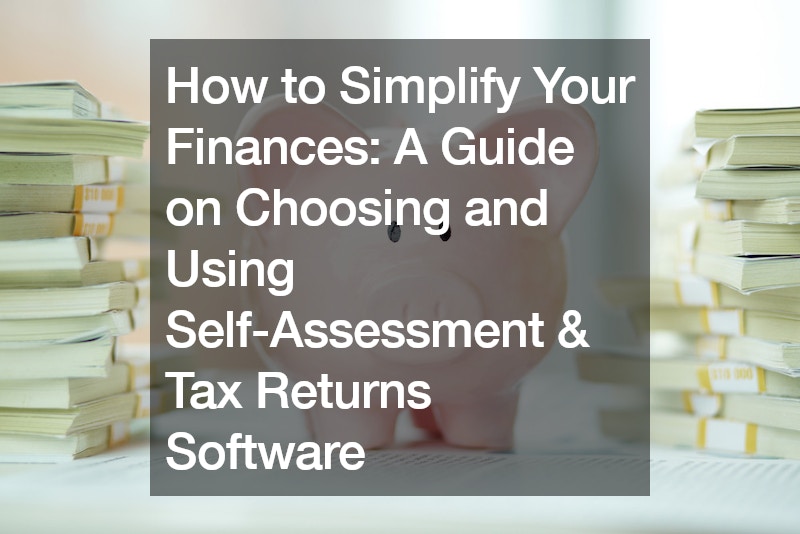How to Simplify Your Finances A Guide on Choosing and Using Self-Assessment and Tax Returns Software

Effectively managing your finances, especially when dealing with self-assessment and tax returns, can be a challenging task. However, with the right tools and strategies, you can streamline this process, making it more efficient and stress-free.
In this comprehensive guide, we will explore the essential steps to simplify your financial responsibilities by selecting and utilizing self-assessment and tax returns software.
Choosing the Right Self-Assessment & Tax Returns Software
The initial step in simplifying your finances involves selecting suitable self-assessment and tax returns software. Start by visiting the official government website, gov.uk, and log in using your assigned user ID and password. This sets the foundation for a seamless experience with the software.
Customizing Your Return: Answering Pertinent Questions
Once logged in, navigate to the “Tailor your return” section. This feature is designed to personalize your tax return, prompting you to answer relevant yes or no questions based on your financial situation. The three pages of questions guide you through the intricacies of income sources and tax obligations.
For instance, the first page focuses on income sources, including employment, self-employment, or partnerships. Each affirmative response may trigger additional questions, such as the number of employers you had and their names. The “Save and Continue” button proves to be a valuable tool, allowing you to pause and return later, ensuring accuracy and completeness in your responses.
Navigating Additional Income Sources: Interest, Dividends, and More
Proceeding to the second page, you’ll encounter questions about various income sources beyond the conventional. These include interest from bank and savings accounts, dividends from shares, and pensions. Accurate responses are crucial, especially regarding any claims or overpayments from HMRC coronavirus support schemes. Utilize the “help about” link for guidance, ensuring informed decisions and avoiding potential errors in your tax return.
It’s essential to categorize losses correctly, differentiating losses on other taxable income, such as casual earnings or commission, from losses related to specific sections like self-employment. The clarity offered through the “help about” link minimizes confusion, ensuring your tax return accurately reflects your financial reality.
Unlocking Tax Reliefs: Maximizing Returns
The final page of the “Tailor your return” section focuses on tax reliefs, a crucial yet often overlooked aspect. This includes deductions for pension contributions, charitable gifts, married couples’ allowance, and marriage allowance. Here, you can account for taxes paid in the covered tax year, which have already been refunded by HMRC or Jobcentre Plus.
Note that this section is not intended for refunds from previous years or employers. Distinctions between various types of refunds are vital for maintaining the integrity of your financial records. Understanding these nuances ensures your tax return accurately reflects the tax relief you are entitled to, without unnecessary complications.
Conclusion: A Streamlined Financial Journey
Mastering self-assessment and tax returns becomes more manageable with the right approach and the use of dedicated self-assessment and tax returns software. By carefully tailoring your return to your unique financial circumstances, navigating through income sources, and unlocking the benefits of tax reliefs, you pave the way for a streamlined financial journey.
In summary, the key to simplifying your finances lies in choosing the right self-assessment and tax returns software and utilizing it effectively. The “Tailor your return” section acts as a personalized guide, ensuring that you address only the relevant aspects of your financial situation. By following these steps, you not only simplify the self-assessment process but also empower yourself to make informed financial decisions, maximizing returns and minimizing stress in the process.
.

